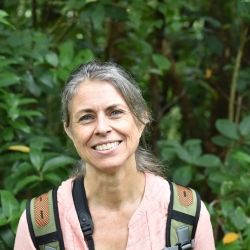Fall 2014 First Field Trip: Water and Energy, Part 2
Isla Chira: beaches, mangroves, and life in a sleepy fishing community
The second part of the field trip continued the watery theme, but we moved on to the sweetest little island in the Gulf of Nicoya: Isla Chira. Our focus was on how to manage aquatic common pool resources: the fishing industries of the Gulf of Nicoya and clamming in the mangrove swamps. We were so lucky to be on the island to celebrate Costa Rica's Independence Day and participate in the night parade.
Here we are, departing from Costa de Pájaros on the mainland: Emily Valencia (University of Colorado-Boulder), Rachel Weber (Duke University), Abby Lutmer (Appalachian State University), Benjamin Russin (Oberlin College), and Maxwell Fleming (University of Colorado-Boulder).
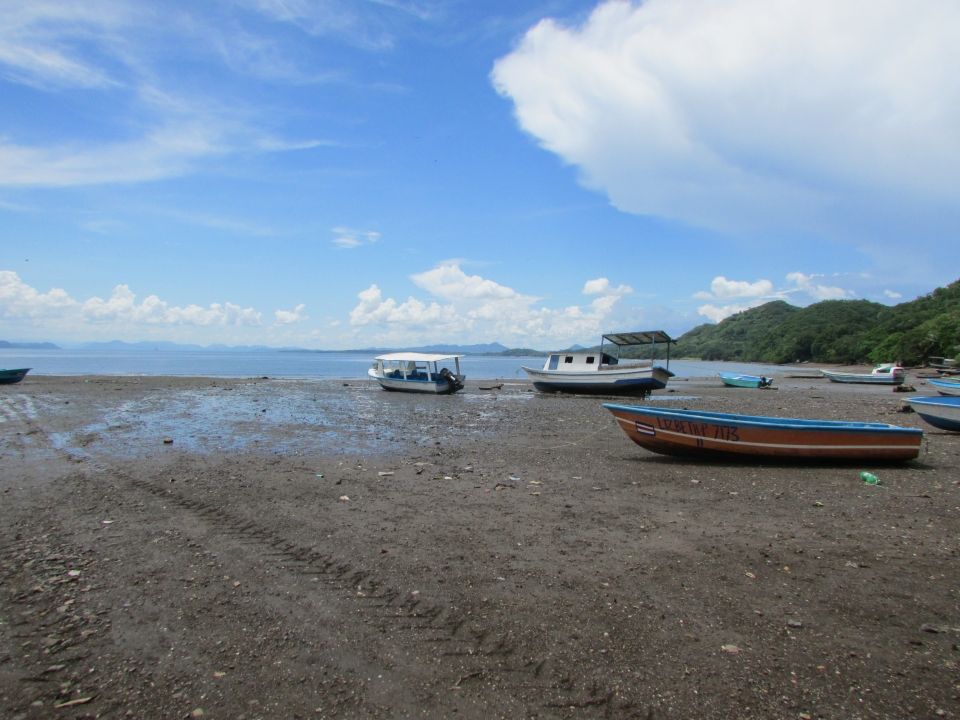
Once on the island, we trucked past local students practicing for Independence Day, and on to the Posada Damas de Chira, where doña Liliana was making dinner with the solar cooker.
The solar cooker works by concentrating the sun's rays onto the pot, positioned in the center.
Since mangroves are so critical to the livelihoods on Chira, we spent a day studying mangrove ecology. We biked to the beach and then hiked into the mangroves.
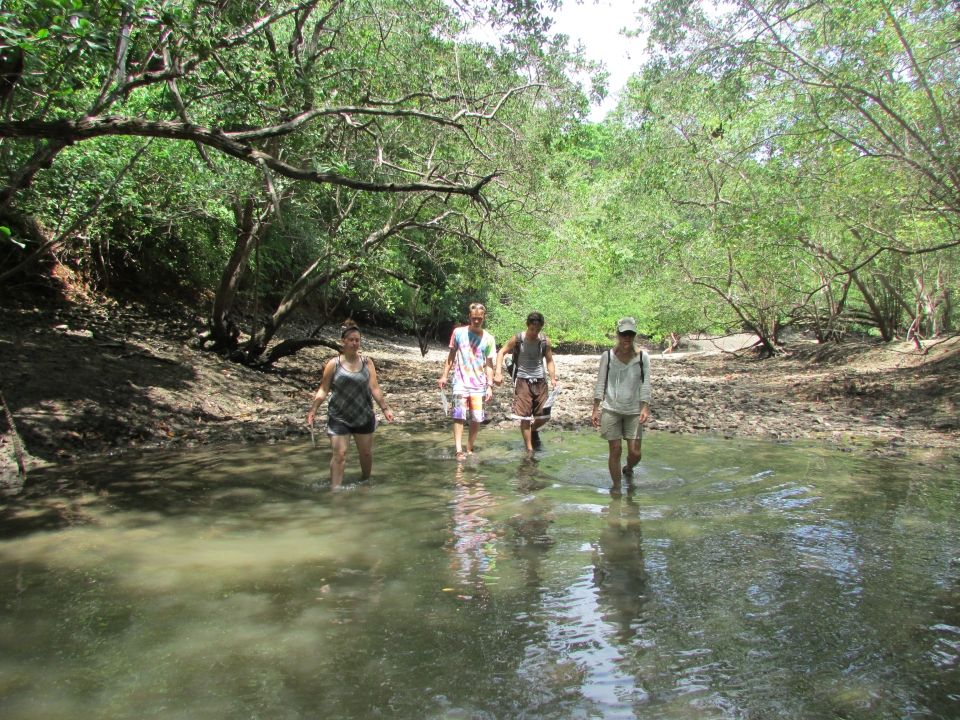
Rachel, Abby and Emily learn how to identify mangrove species.
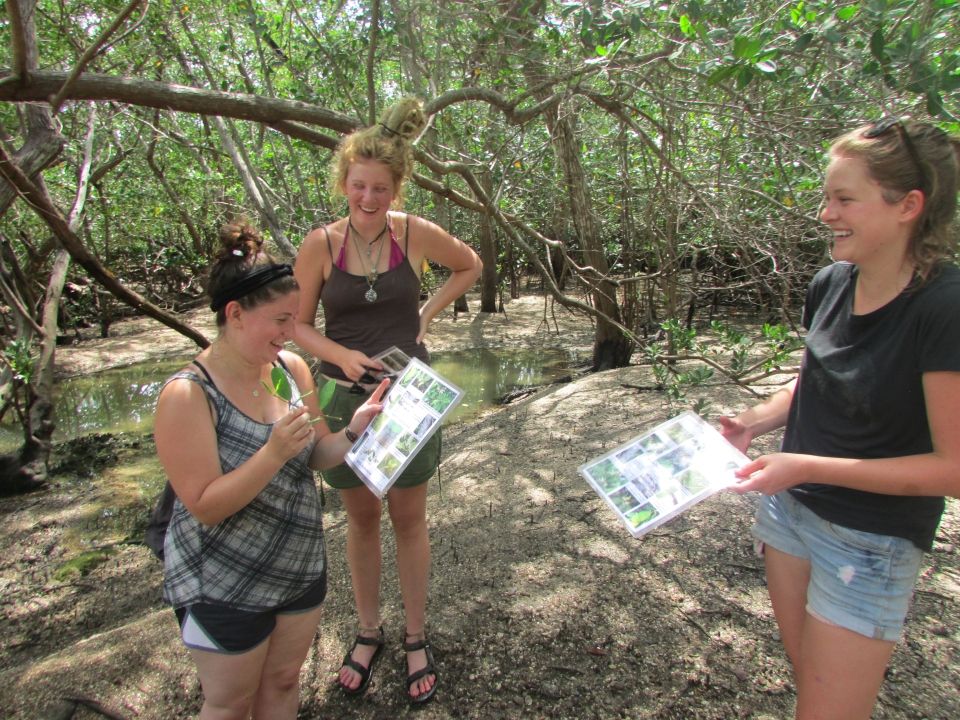
Mangroves are nurseries for shrimp, fish, and lots of other aquatic species. Benjamin examines the benthic fauna.
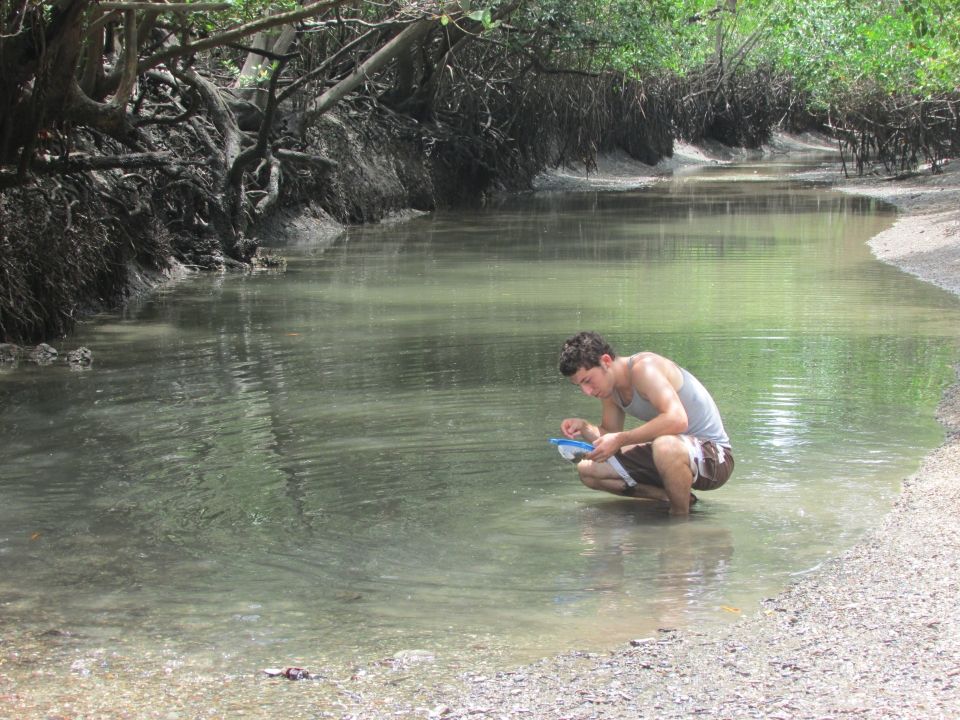
Maxwell perches on red mangrove roots, poised and ready to take notes for a class on mangrove ecology.
Cooling off in the estuary:
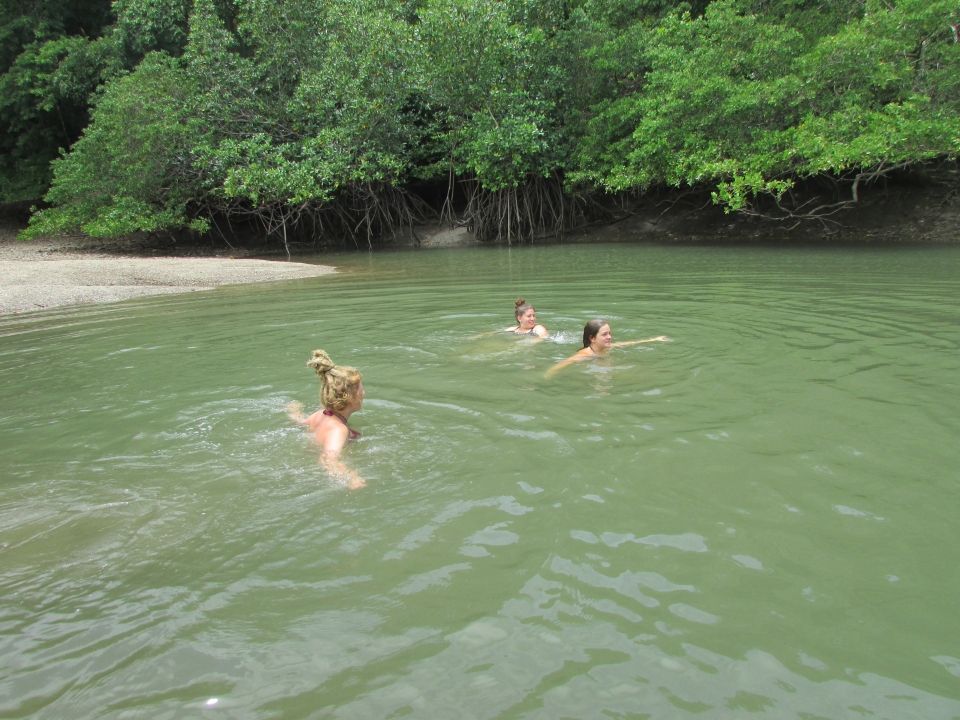
We visited the Association of Hook-and-Line Fishers, which has returned to artisanal fishing methods as a way to protect fish stock. This group is responsible for the creation of the country's first designated Marine Area of Responsible Fishing, which 4 other coastal
communities have copied.
Hook-and-line fisher:
The President of the Association, Gabriel, took us to the mangrove nursery, where the group is raising trees to restore lost mangrove habitat, critical as breeding grounds for their fish stock.
An essential activity that the Hook-and-Line Association does every single night - without fail - is patrol the waters, to keep poachers away. We got to conduct a patrol with them but, as luck would have it, it was very rainy. We understand much better now the sacrifices that the Association must make to protect their common pool resource.
Rachel squints through the rain...
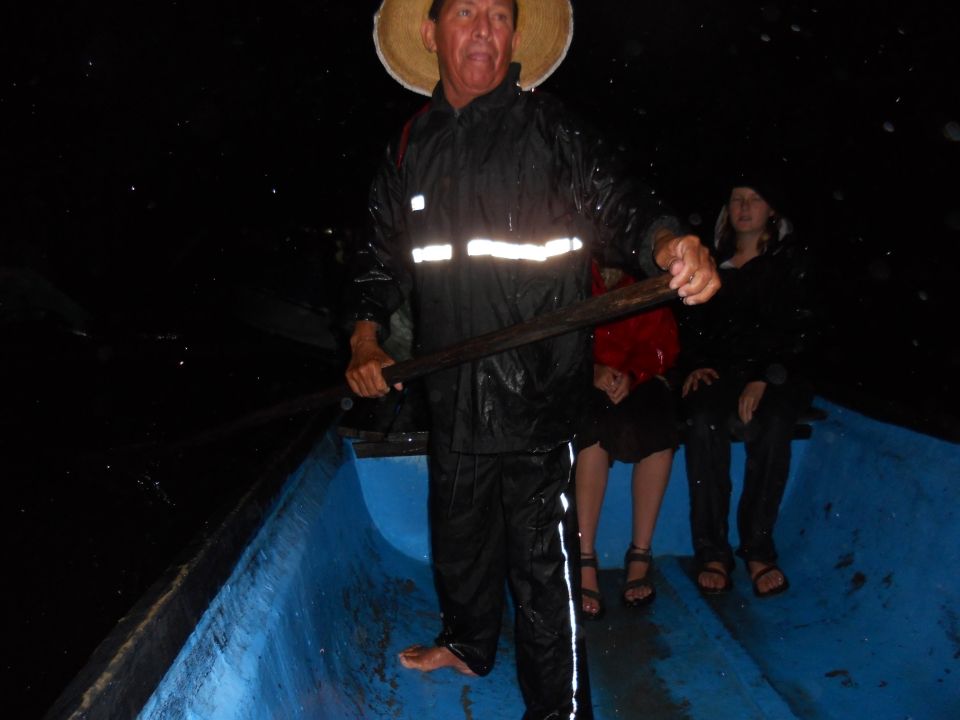
It was really wet but really worth it!
Women's Clamming Association: We heard from Vilma about the valient efforts of women to stock and protect their clamming grounds. Vilma took us to the mangroves where the nurseries had been, and told us all about how poachers stole their success story. Today, clam populations are all but depleted, which we appreciated when we searched for them among the red mangrove roots.
Benjamin, Rachel, and Maxwell dress for the occasion:
Where the clams are...
And some clam ceviche too!
Independence Day celebrations on Isla Chira include a night parade, lit with faroles (lanterns), along dark country roads. The setting is perfect to recall the original event in 1821 when people gathered in a farol-lit plaza in Guatemala City to learn that they had been granted independence from Spain.
Here we are, preparing our faroles:
Ready to go: Emily Valencia, Rachel Weber, Abby Lutmer, Benjamin Russin, and Maxwell Fleming.
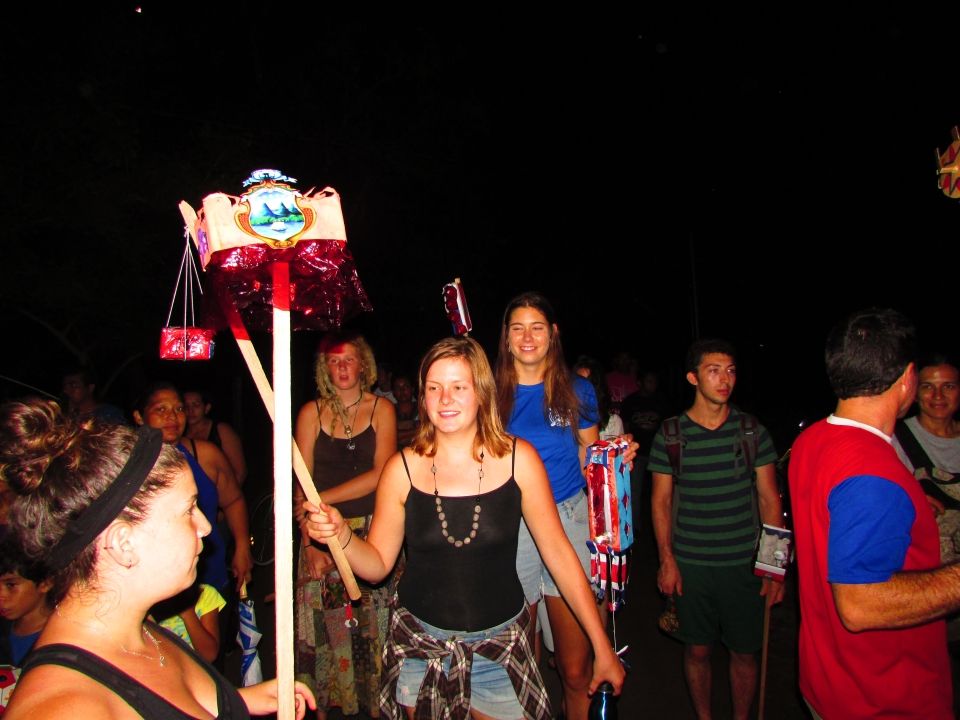

Paola Muñoz (Program Assistant) is thrilled about the whole Independence thing.
Before leaving Isla Chira, we conducted a clean up of Playa Muertos (Beach of the Dead). A few dead bodies popped up (but no dead humans). We finished with a little story-telling, using some of our favorite pieces of trash.
Beach of the Dead did not disappoint...

Talking trash: Abby, Rachel, and Emily share the story of time travel, washing machines, and crocodile dreams.
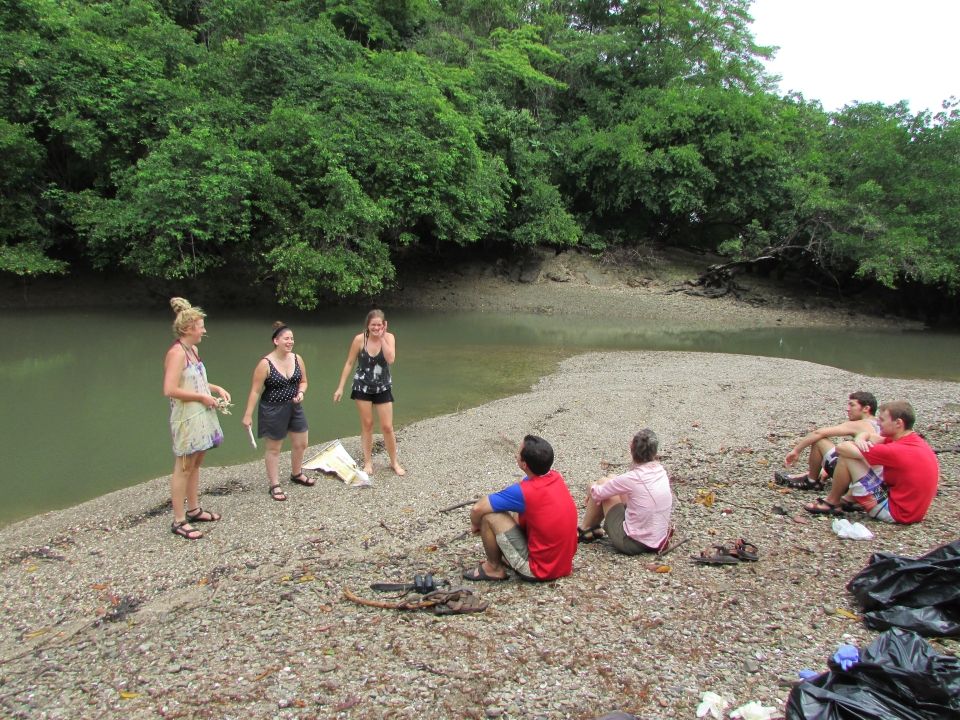
Adam Stein recounts how two islanders found true, shoe-less, love (and fresh breath).
And Karen Masters tells the tale of the straw that broke the camel's back, but inspired a sustainability revolution. Stay tuned to learn how this silver-lining straw made it to Playa Muertos.
Related Posts
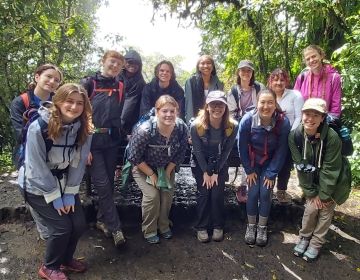
Happy Earth Day: Today and Every Day
Happy Earth Day! Every April 22, this global event comes around to remind us how precious our planet is, what sustainable efforts we can make to protect Earth, and that... keep reading
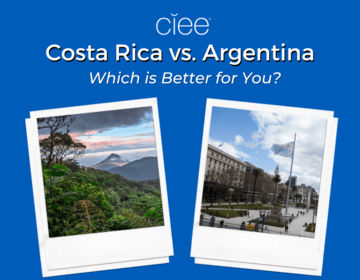
Costa Rica vs. Argentina: Which is Better for Study Abroad?
Imagine yourself sipping mate in a bustling Buenos Aires café or lounging peacefully in a hammock overlooking Costa Rica's lush rainforests. These contrasting scenes represent just a glimpse of the... keep reading
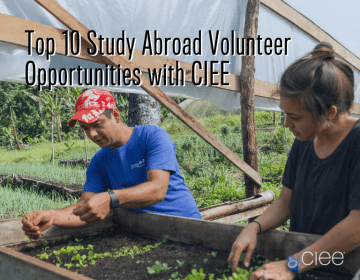
Top 10 Study Abroad Volunteer Opportunities with CIEE
Have you ever wondered if you could volunteer abroad? Perhaps you're looking into study abroad programs that provide international volunteer opportunities. If you’re itching to study abroad and truly make... keep reading
